My obsessive love for bias tape is widely known. I love teaching folks how to make continuous bias tape, and I love finding new projects where I can apply it and exploit its unique characteristics. I read, though, every now and then, criticisms of bias tape, and hear from folks who genuinely want to know why they can’t use fabric that’s cross-cut rather than cut on the bias.
First, let’s clarify the terms I’ll be using. “Cross-cut” means fabric that has been cut horizontally, from selvage to selvage. Fabric cut in this direction has a small amount of stretch and give, and is cut along a single thread of the cross-grain. “Bias” means fabric cut on a 45-degree angle, across the grain and cross-grain, at the point where those threads intersect. Fabric cut in this direction has a great deal of stretch and give, and no single thread is exposed along one edge of the cut.
I have two reasons why I almost ALWAYS use bias tape rather than cross-cut strips when creating a binding for a project: WEAR and VERSATILITY.
WEAR refers to how long the fabric will last and withstand friction and abuse (like from an arm rubbing up against it or from visiting the inside of a washing machine) before the fibers that make up the fabric simply won’t hold together any longer. We’ve all seen fabric that disintegrates after it’s been worn thin–that’s what we’d like to avoid for as long as possible when we’re sewing. Any technique that will make my projects live longer lives is worth it to me, so I’m always looking for ways to extend wear.
The two most frequent uses for bindings are in quilting (along the edges of the finished quilt) and in apparel (primarily to finish edges, such as an underarm or a waistband). In both these instances, we’re working with the EDGE of a piece of fabric. When quilting, that edge is where most of the handling takes place, when folding or pulling up the covers or when sloshing around inside the washer. In clothing, that edge is frequently at entrances and exits, like arm holes or waists, where the garment brushes up against skin or gets rubbed through the wearer’s movement. When a piece of fabric is folded along the cross-grain, it’s basically folded down one single thread, so any wear that happens on that fold is working on that one, defenseless little thread every time there’s friction. Poor thread. At some point, it will give way; it’s only a little thread, after all. Fabric folded along the bias, though, as bias tape is, exposes threads at angles to one another. Look closely at this photo, and see how the threads in the weave of the fabric are hitting one another (click for a larger view):
See how the threads criss-cross one another? That means that every time there’s friction on fabric cut on the bias, it rubs on many, many threads rather than just one. Long after that single thread might’ve given way, the bias tape will be soldiering on, one solid, dependable piece.
The other reason I prefer bias tape is VERSATILITY. By its very nature, bias tape is more shape-able than fabric cut on the cross-grain: that extra stretch allows bias tape to be shaped and manipulated in such a way that it easily goes around curves or ripples smoothly, with no folds or creases. With just a steam iron, look how easily a piece of bias tape can be shaped into a curve or circle:
Notice that the bias tape is lying flat–it’s not just laid out in a curve, it’s actually been pressed so that the curved shape is permanent. You just can’t get a piece of fabric cut on the cross-grain to do that. This allows you to use bias tape to create curved designs (all the lines in this Celtic quilt are created using bias tape that’s been appliqued in place–pattern available from Scarlett Rose):
To create a clean finish on the curved underarm of a garment:
Or to bind a circular quilt:
So, I’ve pushed back a great deal when I hear that some folks just plain don’t like bias tape. Say what, now? Now, I admit that making bias tape (which I always do–I never use the store-bought stuff) takes more fabric. Bias tape is slightly less efficient than is cross-cut fabric, I admit that. Using a fat quarter (18″ x 22″) to make continuous bias tape, you get approximately 338″ of 1″ wide bias tape. Using the same fat quarter and cross-cutting it rather than cutting on the bias, you get approximately 378″ of 1″ tape. And I admit that it takes time to make continuous bias tape, and that the process can be a steep learning curve. For my money, though, I can use bias tape in so many more places that it’s worth the slight loss of efficiency to have the advantage of fabric cut on the bias.
So there we have it. In this Court of Sewing Opinion, bias tape still rules the day.

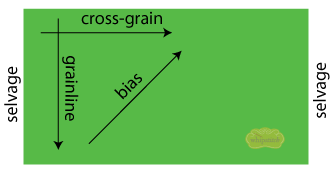
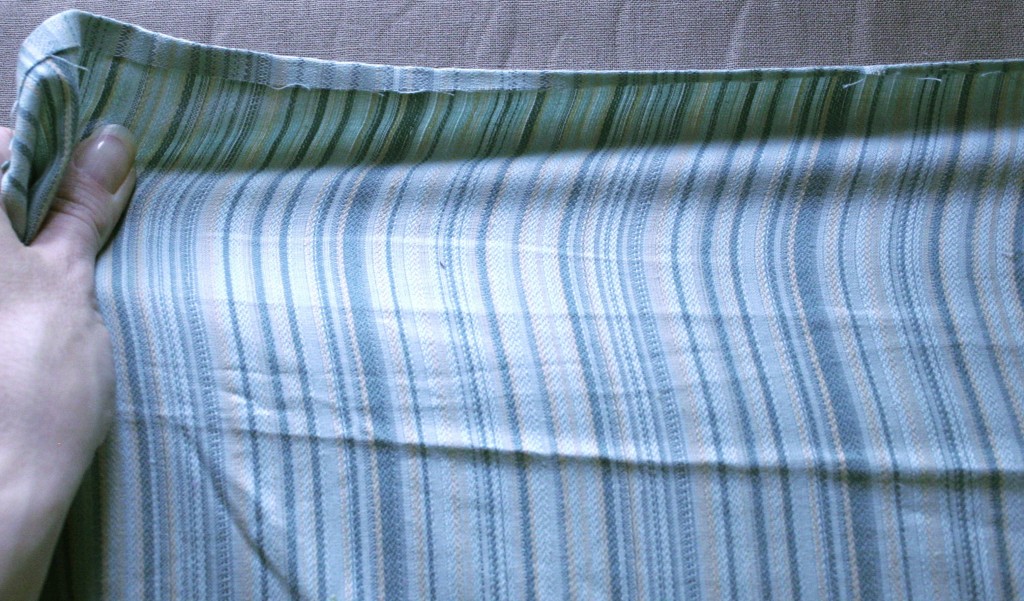
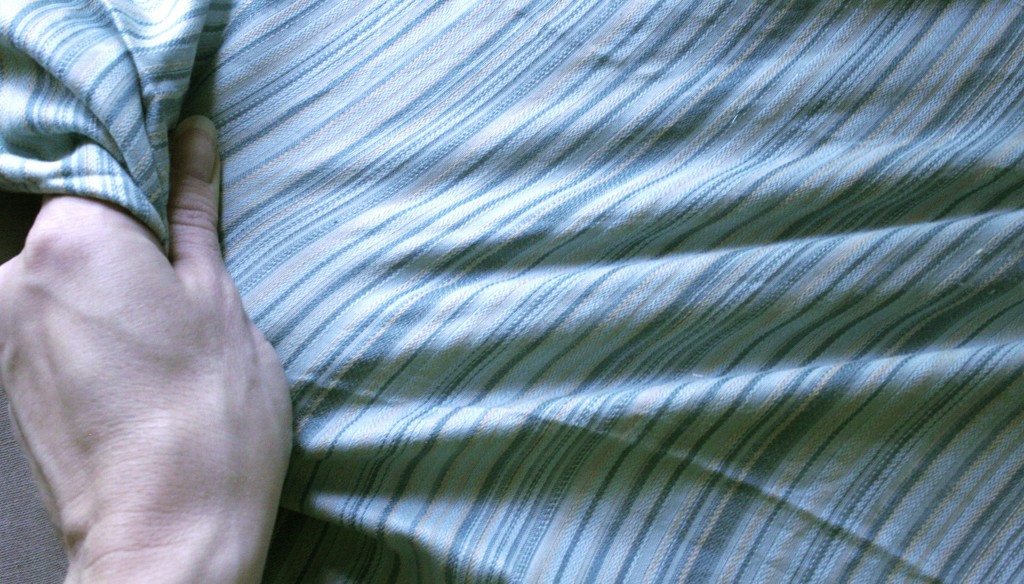
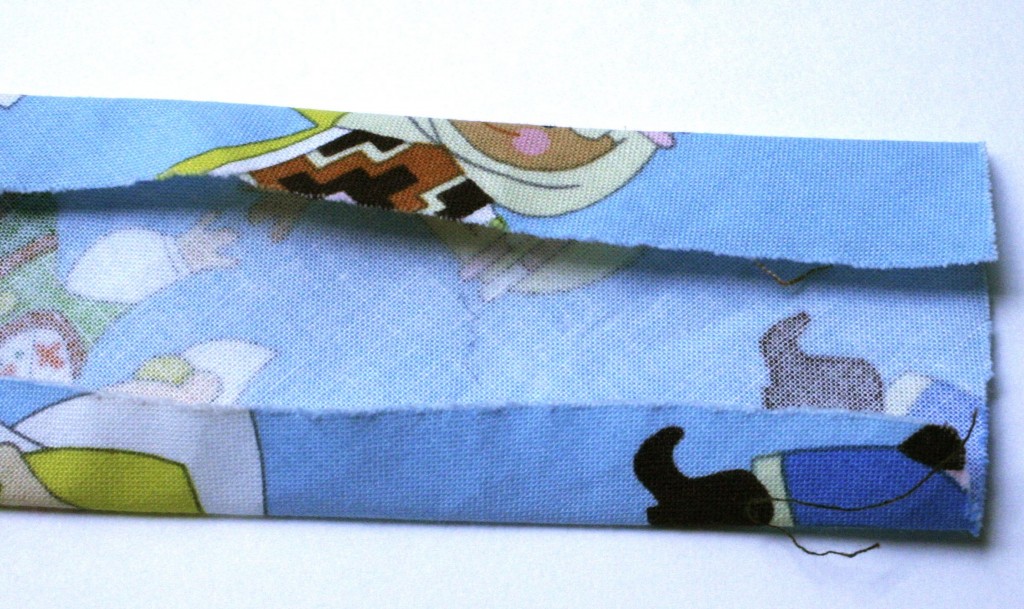
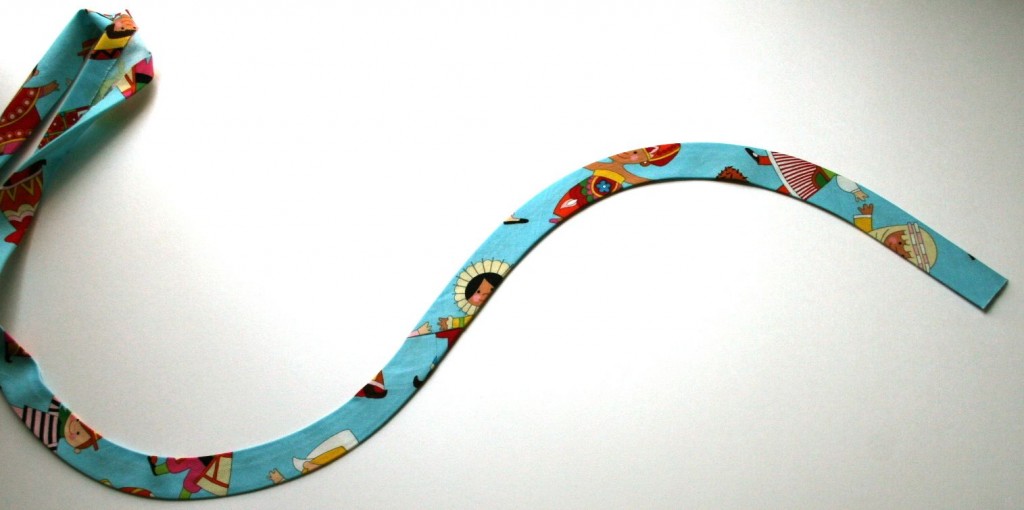
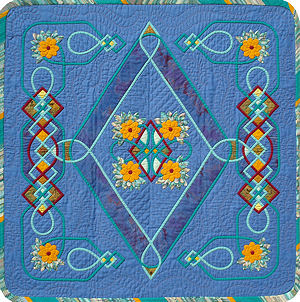
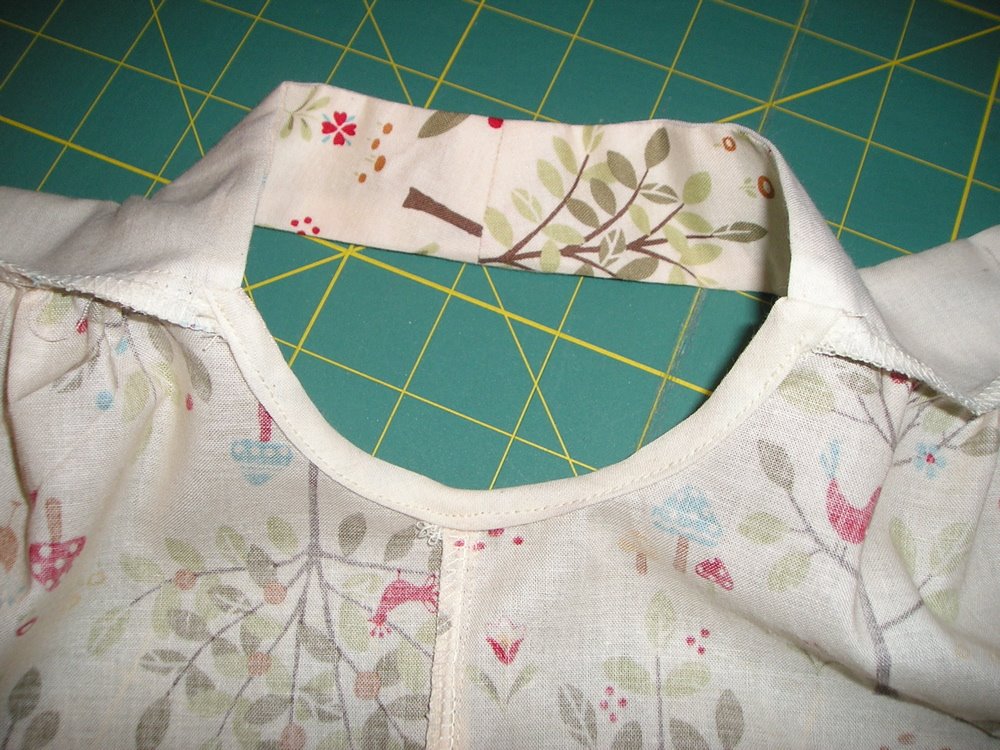
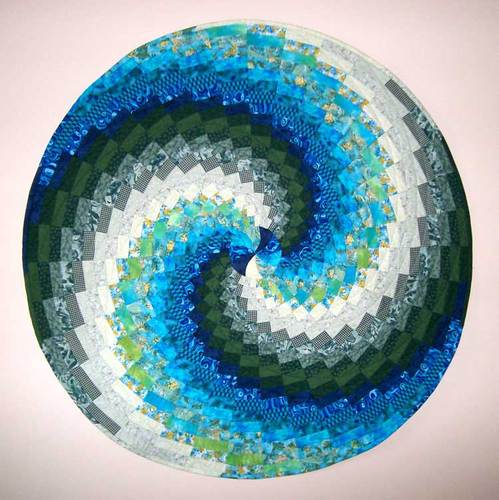
Holly
July 8, 2010 at 4:31 pmThank you for this clear explanation of the benefits of bias binding! I’ve always used cross-cut bindings before, but recently heard about the durability of bias binding. It makes sense when you think about that one poor thread trying to keep it all together in a cross-cut binding!
Now I just have to learn the tricks of creating bias binding!
Deborah
July 8, 2010 at 10:32 pmHolly–
Click the link at the top of the post that says “continuous bias tape.” It leads to a step-by-step photo tutorial for making your own bias tape–that’s how I do mine every time!
Tweets that mention Showdown: Bias Tape vs Cross-Cut Fabric — Whipstitch -- Topsy.com
July 9, 2010 at 9:16 am[…] This post was mentioned on Twitter by Whipstitch, Whipstitch. Whipstitch said: An ode on bias tape, my deep love: http://whipstitchfabrics.com/blog/showdown-bias-tape-vs-cross-cut-fabric/ […]
Holly
July 9, 2010 at 12:14 pmThanks, Deborah! I’ll have to try your tutorial the next time I make binding!
Kay Stephenson
July 10, 2010 at 12:42 pmAre those your quilts? Fabulous!
Sara
July 15, 2010 at 2:18 pmI just made my first strip of continuous bias tape! Woot!
Scarlett Rose
March 23, 2012 at 2:18 pmJust in case anyone is interested in the pattern for the Celtic quilt pictured in this post, it’s my design and the pattern is available from my website at http://www.scarlettrose.com/celtic_medallion_iv.html
Deborah
April 12, 2012 at 10:41 amWhoops! Thanks so much for catching my mistake! The link is updated to the correct source now–apologies for the error! 🙂